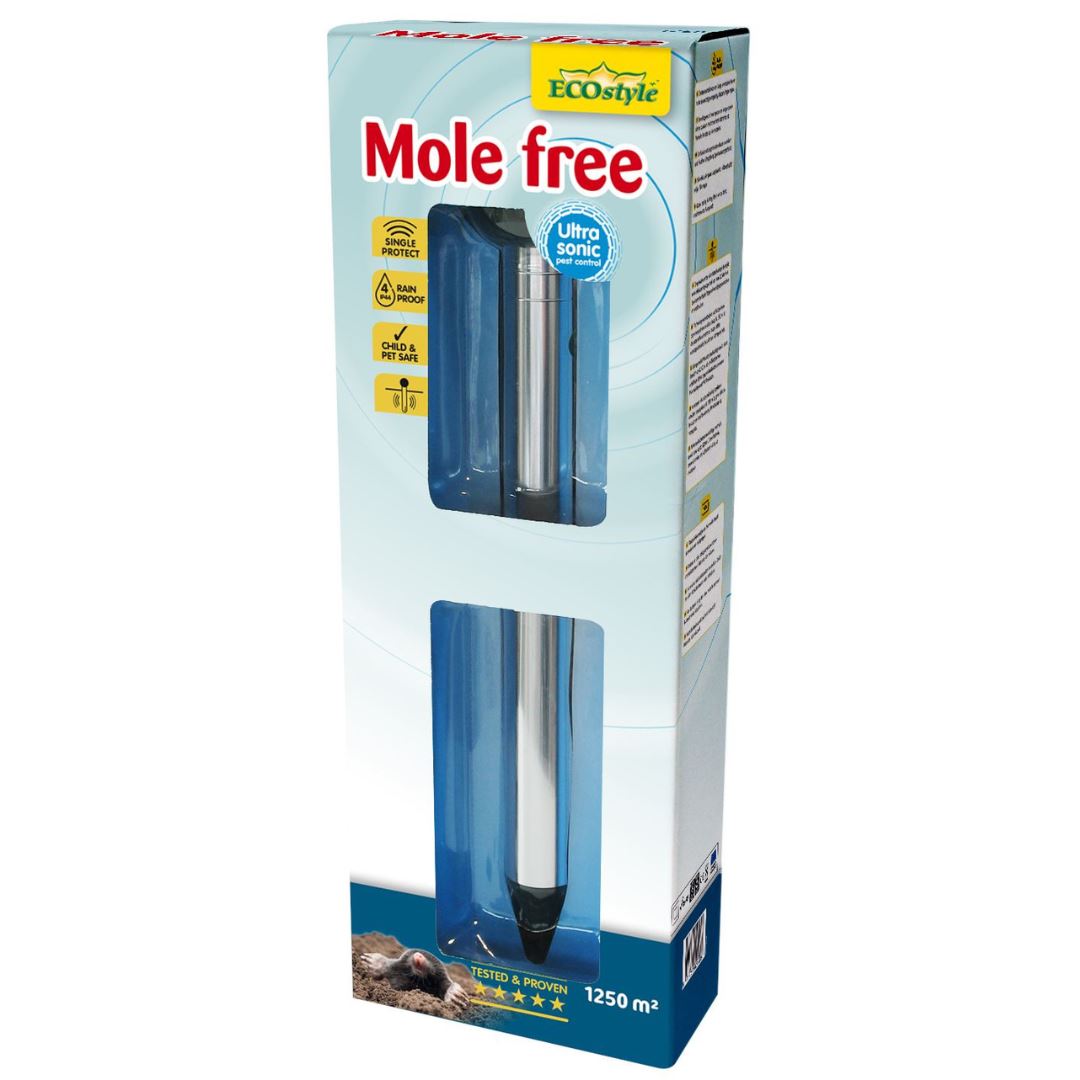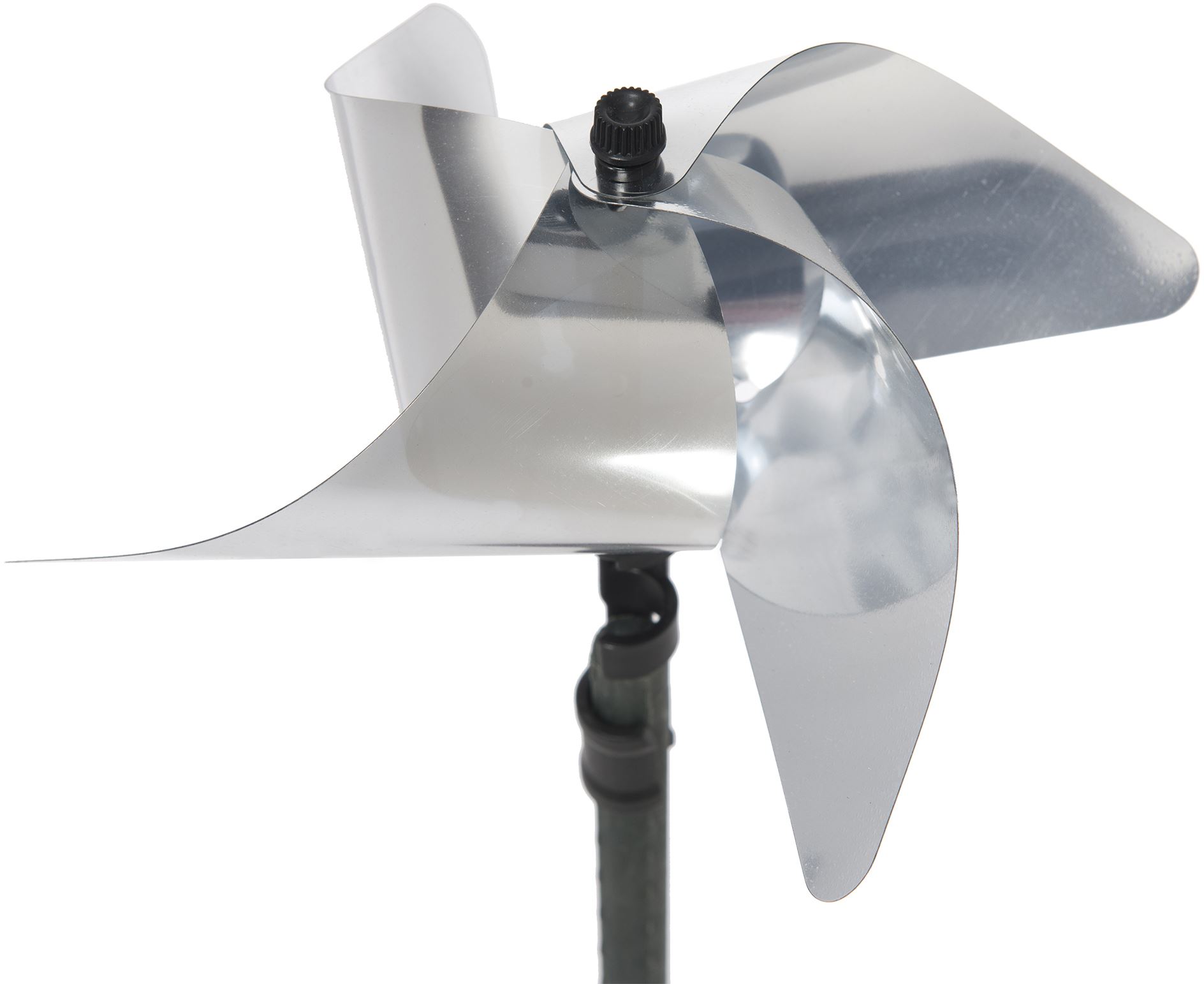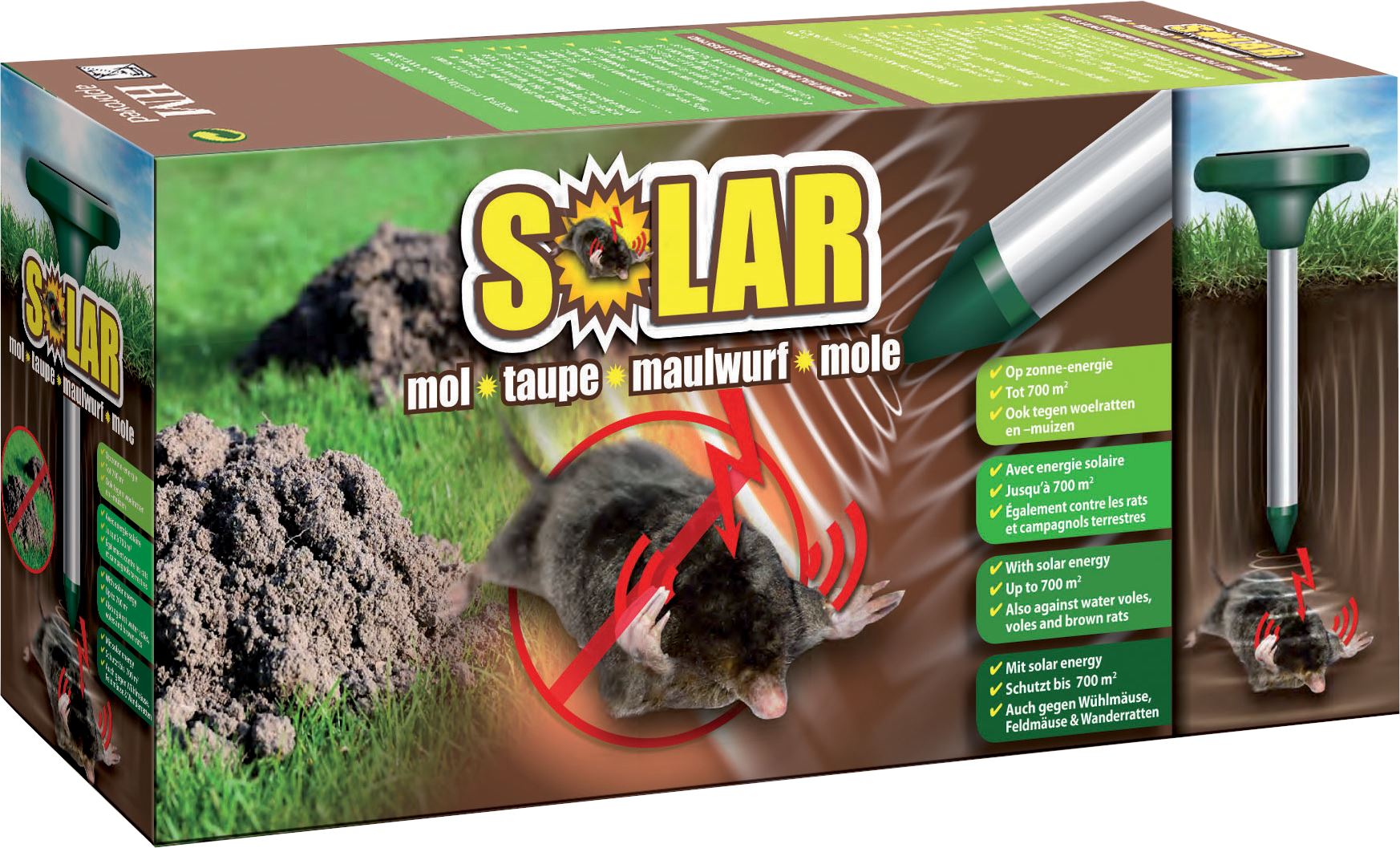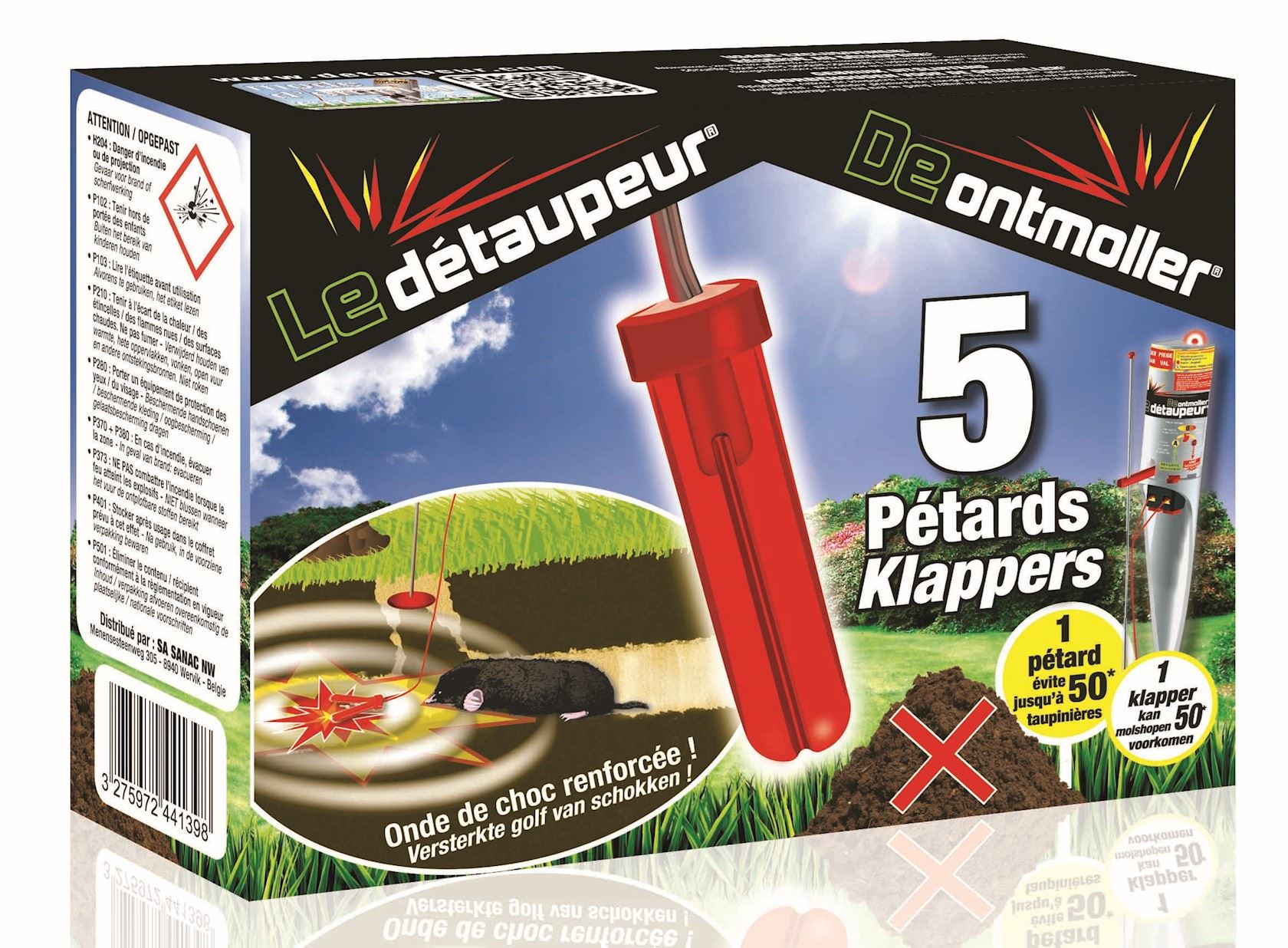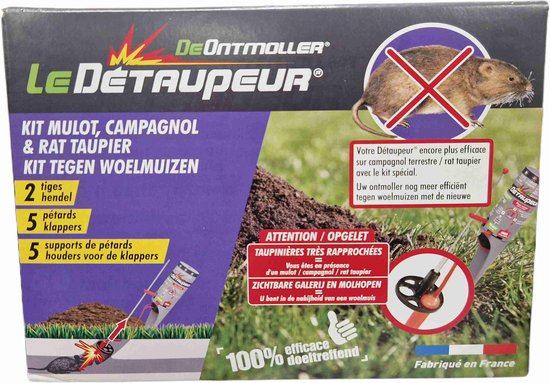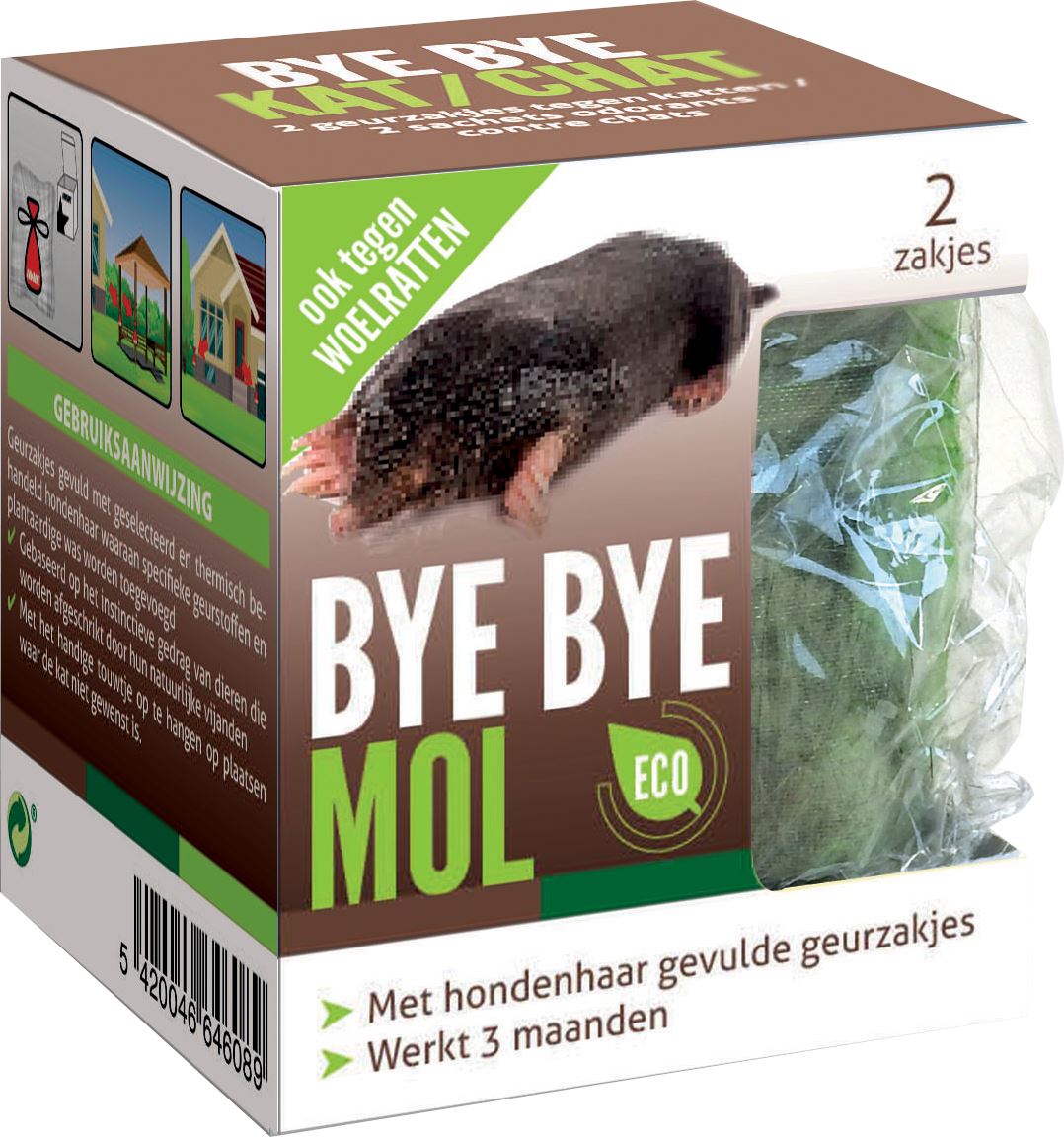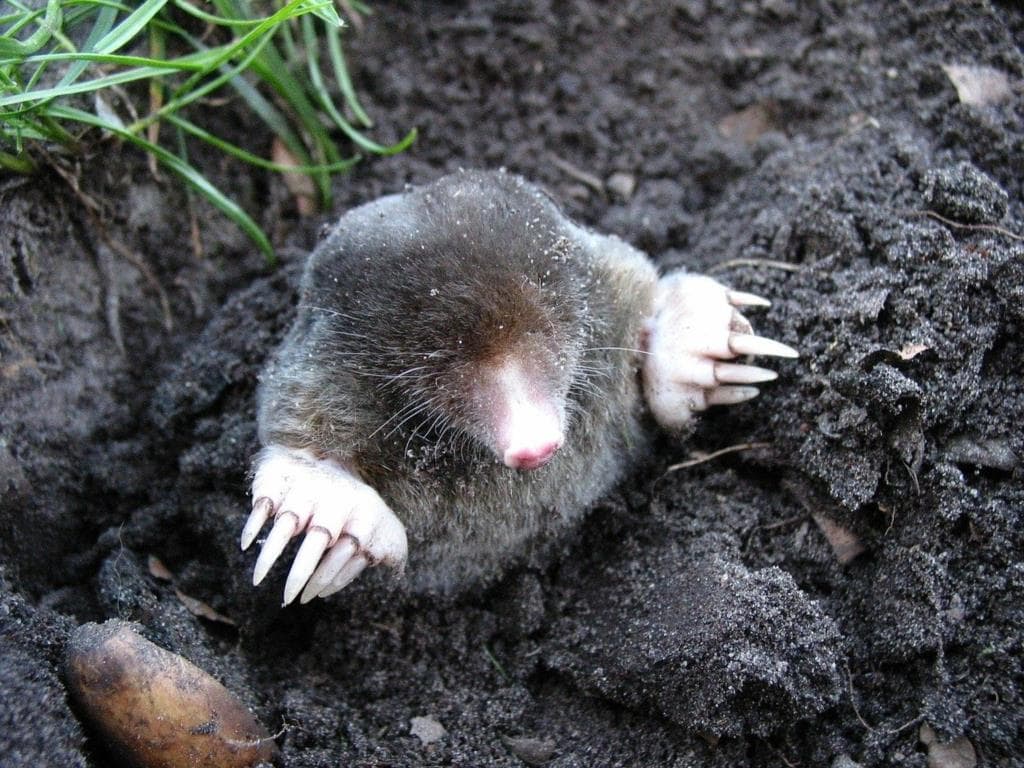
How to ensure a mole-free garden
Once it has found your garden, it is no fun getting rid of it. There are many products on the market to fight them or chase them away. We will take a closer look at them for you, and give you some golden tips!
Getting started with the molehills
The molehills that are already there are best spread out over the lawn, or remove the above-ground soil so that the lawn still gets enough light and is not suffocated. You can also seal up the molehills and passages. In this way you make it a little harder for the moles and you immediately recognize new activity through the fresh molehills.
Chase away moles
Would you rather not make victims? Then you can also chase the moles out of your garden. Note that the moles will then seek out nearby gardens so your neighbors will not be happy about this (if you have them of course). Also, the moles can always come back so you need to keep a close eye on the garden, and reuse these repellent methods and products regularly.
There are two ways to chase away moles:
1. With a mole repellent
This device, which is usually solar powered, emits
underground ultrasonic vibrations that the moles find unpleasant. There are different frequencies so they do not get used to the vibrations. After installing the mole repellent, it may take several days for them to leave your territory. They will keep quiet at the first vibrations but if these persist, they will seek other places anyway. You can also change the location of the device regularly to make it even more effective. A nice touch is that this repellent often works against voles and mice. When the device is completely in the ground, you will not notice anything above ground.
2. Scented capsules, sachets or granules
Moles may have poor eyesight, but their sense of smell is all the stronger. You can therefore take advantage of this. There are various scent capsules and sachets on the market that you can dissolve in water. These have a
distinct and unpleasant smell due to their strong aromas, such as garlic. Such products usually wear off after about three months.
The advantage of the above methods is that they are
harmless to pets and children.
Also, certain plants such as herbaceous spurge (Euphorbia Lathyrus), also called moleweed, are said to keep moles out of the garden. However, this has not been proven. Moreover, the sap is dangerous for children, among other things! ☠️
Moles control
-
Do you want to get rid of moles for good? Then you can catch them with the traditional mole clamp. This is still the most effective solution and the moles are instantly killed when they fall into the trap. However, it is essential that you place the clamp in the right location, namely at the beginning of the main tunnels.
Moles make a complete underground system that includes a nest, main tunnel, some hunting corridors and molehills. The hunting passages, which are shallow and therefore visible above ground, are used only occasionally. It is therefore useless to place the clamp here. You must therefore look for the main tunnel. You can find it by inserting a stick ten to twenty centimeters into the ground next to the fresh molehill (or between two molehills). If you feel no resistance, then you have found the tunnel! Start digging there so that you can place the mole clamp in the ground and the upper parts of the clamp will be just above the grass. After that, it's important to go as little as possible near the clamp so that the moles don't perceive any human or animal activity. You can, however, start checking daily for any catch.
- A mole tube is a good alternative if you prefer to catch the mole alive. You place this tube under the ground in the mole's main tunnel. With this tube you can also catch voles and rats.

Tip from Marcel
We always recommend mole clips and traps because we find that repellents and scent-based products only work temporarily
A fertile soil
To end on a positive note: moles only seek out
healthy and fertile soils. There you can find a lot of soil life, and thus a wide range of food. So you know that the soil quality in your garden is certainly good. The moles also like to eat grubs and black mites, those other enemies of your lawn. So it's not all doom and gloom.
More info? Receive all our gardening tips directly in your mailbox!
We'll only email you handy facts, green advice and our best promotions & discounts. You'll receive it about once a week and you can unsubscribe at any time. No spam, promise 🤞












